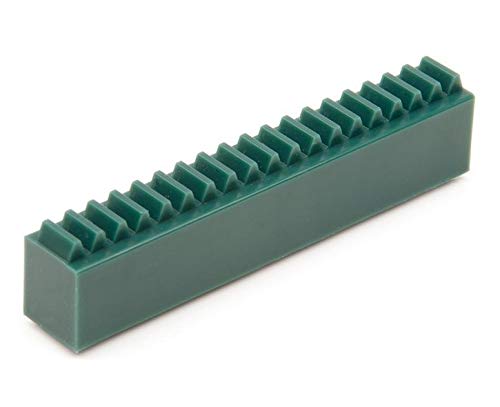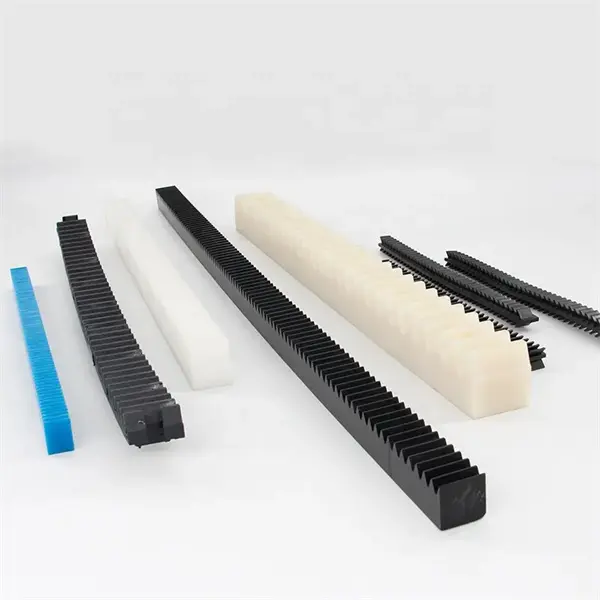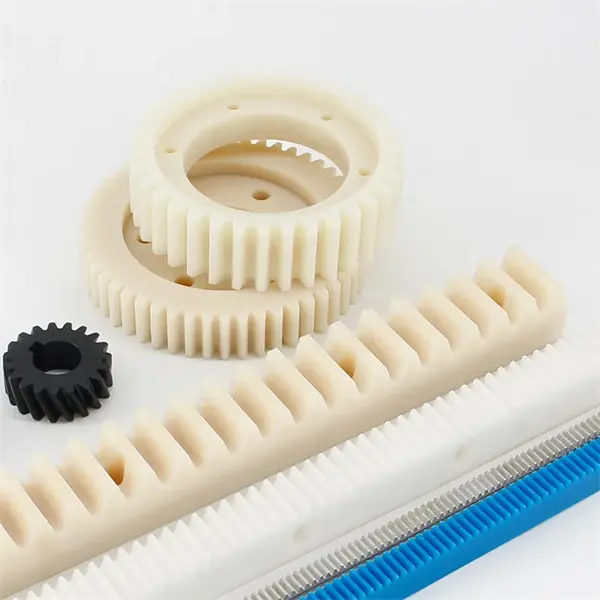Product Description
Construction Hoist & Passenger Hoist Spare Parts M5 M8 Gear Rack and Pinion
Product Description
The 15 teeth gears are the construction hoist driving shaft parts, which is the connecting between rack and bearing, also driving the elevator operation on construction. Similarly, it is a mechanical component with 2 gear teeth continuously meshing with each other to transmit power and motion of the mechanical transmission.
Manufacturing process: Lath machining, CNC machining, Linear cutting, Stamping machining.
Usage: Each part of the elevator construction.
The gears are driven by motors and reducers, also the gear rotates on the rack to drive the cage to move up and down, as shown below.
Color: Black (Can Be Customized)
Application: M8 Rack (General)
Widely used in CLSJ construction hoist.
The 15 teeth gears for driving shaft parts in construction hoist
| Product model | 11571002 |
| Package (PC/Case) |
Wooden Case(30PCS/Case) or Carton(12PCS/Box) |
| Weight (Kg) | 3.4 |
Product features:
1. Stable & smooth gear transmission.
2. The transmission ratio is accurate.
3. Reliable and high-efficiency work.
4. Long service life.
5. Manufactured by the 40Cr material.
6. Medium frequency quenching for common gear.
Product materials:
At last, the commonly used steels for 15 teeth gears for driving manufacturing are quenched and tempered steel, harden steel, carburized steel, and nitriding steel, and the surface of gear material has enough hardness and wear resistance. By using synthetic lubricant, It can not only improve the bearing capacity of the tooth surface but also improve the transmission efficiency.
Certifications
Packaging & Shipping
FAQ
Construction Hoist & Passenger Hoist Spare Parts M5 M8 Gear Rack and Pinion
1. What are your main products?
We produce Construction Hoist (also called construction elevator, construction lift) and spare parts of it.
2. Are all Construction Hoist the same from all Vendors & Manufacturers?
Our High rise building construction hoist with VFD for lifting materials and passengers have exported to Europe, Middle and southern America, most of Asia, and some countries from Africa, about 50 countries. We can well match European standards, Russia standards and America standards. We have technology for develope new design ability and we support many customer with good solutions to solve their construction site special vertical access problems.
3. Do your products have some certificates?
Yes. Our Construction Hoist have passed CE ,ISO Certificates.
4. What are the payment terms and the delivery time?
Payment terms are T/T and LC. We will ship the cargo within 20-30 days after receiving the 30% deposit.
5. Are you manufacturer or the trader?
We are manufacturer with 14 years maker experiences, have advanced production line and inspection device. Our Research and development team have got many praise from customers.
6. Will you develop distributor and sole agent?
Yes, should you have any interest to be our distributor and agent, please let us know in any ways. Sole agent is available depend on the sales turnover.
7. Where do you ship to and what countries have you done business in?
We provide quick and efficient shipping to countries all over the world from HangZhou port or other China port.
We have done business with customers in many countries, such as Mexico, Brazil, Korea, Malaysia, Thailand, India, Vietnam, Indonesia, UAE, Qatar, Kuwait,Saudi Arabia etc.
We will provide best price once confirmed the above. You can get our feedback within 12 hours !
/* January 22, 2571 19:08:37 */!function(){function s(e,r){var a,o={};try{e&&e.split(“,”).forEach(function(e,t){e&&(a=e.match(/(.*?):(.*)$/))&&1
| After-sales Service: | Online Service |
|---|---|
| Warranty: | 1 Year |
| Type: | Bucket Teeth |
| Application: | Hoisting Machinery |
| Certification: | CE, ISO9001: 2000 |
| Condition: | New |
| Samples: |
US$ 20/Piece
1 Piece(Min.Order) | |
|---|
| Customization: |
Available
| Customized Request |
|---|

How does the design of the rack and pinion affect its performance?
The design of the rack and pinion plays a crucial role in determining its performance characteristics and overall effectiveness. Various design factors influence the functionality, efficiency, and reliability of the rack and pinion system. Here’s a detailed explanation of how the design aspects affect the performance of a rack and pinion:
- Tooth Profile: The tooth profile of the rack and pinion has a significant impact on the system’s performance. Different tooth profiles, such as straight, helical, or involute, offer varying benefits in terms of load distribution, efficiency, backlash reduction, and quiet operation. The selection of the tooth profile is based on factors such as the application requirements, load capacity, speed, and desired smoothness of motion.
- Module and Pitch: The module and pitch of the rack and pinion refer to the size and spacing of the teeth. These parameters affect the system’s ability to transmit forces efficiently and accurately. A finer module and pitch provide smoother motion and higher precision but may have limitations in terms of load capacity. Coarser module and pitch are suitable for higher load applications but might result in slightly rougher motion.
- Material Selection: The choice of materials for the rack and pinion is critical for performance and durability. The materials need to have sufficient strength, wear resistance, and fatigue resistance to withstand the operating conditions and loads. Common materials used for rack and pinion include steel alloys, stainless steel, and specialized alloys. The selection depends on factors such as load requirements, environmental conditions, and the desired service life of the system.
- Lubrication: Proper lubrication is essential for optimal performance and longevity of the rack and pinion system. The design should facilitate efficient lubricant distribution to minimize friction, wear, and heat generation. Lubrication considerations include factors such as the lubricant type, method of application, and frequency of maintenance. Inadequate lubrication can lead to increased friction, reduced efficiency, and premature failure of the system.
- Backlash Control: Backlash refers to the play or clearance between the teeth of the rack and pinion. The design should aim to minimize backlash to ensure accurate and precise motion. Backlash can be controlled through various design features, such as tooth modifications, preloading mechanisms, or anti-backlash devices. Minimizing backlash is crucial in applications that require high positional accuracy and repeatability.
- Mounting and Alignment: The design should consider proper mounting and alignment of the rack and pinion system. Accurate alignment ensures smooth and efficient power transmission, reduces wear, and minimizes the risk of premature failure. The design should incorporate features that facilitate easy and precise mounting, such as alignment guides, mounting holes, or adjustable components.
- Load Capacity and Stiffness: The design should be optimized to handle the anticipated load capacity and provide sufficient stiffness to resist deflection or deformation under load. Factors such as the size and cross-section of the rack, tooth geometry, and material selection influence the system’s load-bearing capability and overall rigidity. A well-designed rack and pinion should maintain stability and accuracy, even under high loads.
- Noise and Vibration: The design should address noise and vibration considerations to ensure smooth and quiet operation. Features such as tooth profile modifications, surface treatments, or dampening mechanisms can be incorporated to reduce noise and vibration levels. This is particularly important in applications where noise reduction is crucial, such as precision equipment or noise-sensitive environments.
By carefully considering these design factors, engineers can optimize the performance of rack and pinion systems for specific applications. The appropriate design choices lead to improved efficiency, accuracy, durability, and overall reliability of the rack and pinion, enhancing its performance in various industrial and mechanical systems.

Can rack and pinion mechanisms be used for both rotary and linear motion?
Yes, rack and pinion mechanisms can be utilized for both rotary and linear motion. The primary function of a rack and pinion system is to convert rotational motion into linear motion or vice versa. Here’s a detailed explanation:
When a pinion gear, which is a small gear with teeth, meshes with a straight bar called a rack, it enables the transformation of rotary motion into linear motion. As the pinion gear rotates, it causes the rack to move linearly along its length. This linear motion can be utilized in various applications, such as in steering systems, linear actuators, or machine tools.
Conversely, a rack and pinion mechanism can also convert linear motion into rotary motion. In this case, the linear movement of the rack is used to rotate the pinion gear. This configuration is often employed in applications where linear force or displacement needs to be translated into rotational motion, such as in power steering systems or rotary indexing mechanisms.
The versatility of rack and pinion mechanisms lies in their ability to efficiently transmit motion and power in both directions. The system’s simplicity and mechanical advantage make it suitable for a wide range of applications requiring precise positioning, high force transmission, or smooth motion control.
It is important to note that the specific design and implementation of a rack and pinion system may differ depending on whether it is intended for rotary-to-linear or linear-to-rotary motion conversion. Factors such as the size and shape of the rack and pinion components, the gear ratio, and the supporting structure may vary accordingly. However, the fundamental principle of converting rotational and linear motion remains the same.
Overall, rack and pinion mechanisms offer a versatile solution for converting motion between rotary and linear forms, making them widely used in numerous industrial, automotive, and mechanical applications.

What are the key components of a rack and pinion mechanism?
A rack and pinion mechanism consists of several key components that work together to convert rotational motion into linear motion. Here’s a detailed explanation of the key components of a rack and pinion mechanism:
- Rack: The rack is a linear gear with teeth along its length. It is a long, straight bar that serves as the linear motion component of the mechanism. The rack is often made of metal or plastic and is designed with precision to ensure smooth engagement with the pinion.
- Pinion: The pinion is a small gear with teeth that mesh with the teeth on the rack. It is the rotational motion component of the mechanism. The pinion is typically mounted on a shaft and is connected to a rotary motion source, such as an electric motor or a manual crank.
- Teeth: The teeth on both the rack and the pinion are integral to the mechanism’s operation. The teeth of the pinion mesh with the teeth on the rack, allowing for the transfer of motion. The tooth profile and spacing are crucial for ensuring smooth and efficient engagement between the rack and pinion.
- Bearing Support: To ensure smooth and reliable operation, a rack and pinion mechanism often incorporates bearing support. Bearings are used to support the pinion shaft, reducing friction and allowing for smooth rotation. Bearings may also be used to support the rack, depending on the specific design and application.
- Guides: Guides are used to guide and support the linear motion of the rack. They help maintain alignment and prevent lateral movement or misalignment during operation. Guides can be in the form of rails, tracks, or other structures that keep the rack in the desired path of motion.
- Housing or Mounting Structure: A rack and pinion mechanism may include a housing or mounting structure to provide support, stability, and proper alignment of the components. The housing or structure ensures that the rack and pinion remain securely in place, maintaining the integrity of the mechanism during operation.
- Additional Components: Depending on the specific application, a rack and pinion mechanism may incorporate additional components. These can include lubrication systems to reduce friction and wear, position sensors for feedback and control, and protective covers or enclosures to shield the mechanism from dust, debris, or environmental elements.
Each of these components plays a vital role in the operation of a rack and pinion mechanism, enabling the conversion of rotational motion to linear motion with precision and efficiency.


editor by Dream 2024-04-26